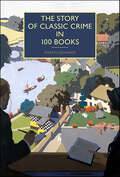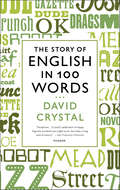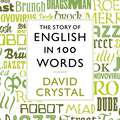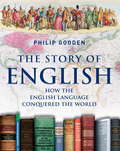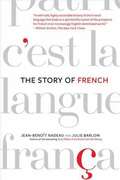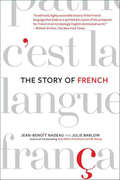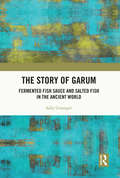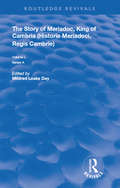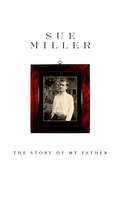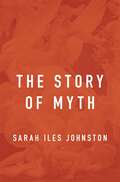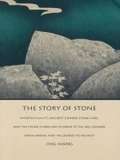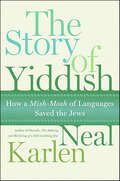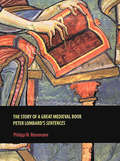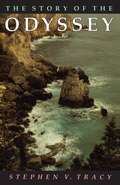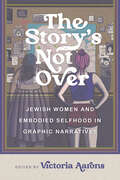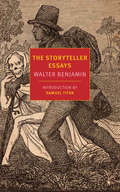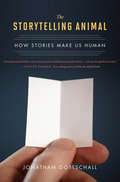- Table View
- List View
The Story of Classic Crime in 100 Books
by Martin Edwards&“This is an exemplary reference book sure to lead readers to gems of mystery and detective fiction.&” —Publishers Weekly, starred review This book tells the story of crime fiction published during the first half of the twentieth century. The diversity of this much-loved genre is breathtaking, and so much greater than many critics have suggested. To illustrate this, the leading expert on classic crime discusses one hundred books ranging from The Hound of the Baskervilles to Strangers on a Train which highlight the entertaining plots, the literary achievements, and the social significance of vintage crime fiction. This book serves as a companion to the acclaimed British Library Crime Classics series but it tells a very diverse story. It presents the development of crime fiction—from Sherlock Holmes to the end of the golden age—in an accessible, informative and engaging style. Readers who enjoy classic crime will make fascinating discoveries and learn about forgotten gems as well as bestselling authors. Even the most widely read connoisseurs will find books (and trivia) with which they are unfamiliar—as well as unexpected choices to debate. Classic crime is a richly varied and deeply pleasurable genre that is enjoying a world-wide renaissance as dozens of neglected novels and stories are resurrected for modern readers to enjoy. The overriding aim of this book is to provide a launch point that enables readers to embark on their own voyages of discovery.
The Story of English in 100 Words
by David CrystalThe world’s foremost expert on the English language takes us on an entertaining and eye-opening tour of the history of our vernacular through the ages.In The Story of English in 100 Words, an entertaining history of the world’s most ubiquitous language, David Crystal draws on one hundred words that best illustrate the huge variety of sources, influences and events that have helped to shape our vernacular since the first definitively English word—“roe”—was written down on the femur of a roe deer in the fifth century. Featuring ancient words (“loaf”), cutting edge terms that reflect our world (“twittersphere”), indispensable words that shape our tongue (“and,” “what”), fanciful words (“fopdoodle”) and even obscene expressions (the “c word”), David Crystal takes readers on a tour of the winding byways of our language via the rude, the obscure and the downright surprising.“From pre-eminent British linguist Crystal . . . comes this delightful history of the words we use (and some we’ve forgotten) and how we came to use them. . . . Crystal’s enthusiasm for—and wealth of knowledge about—the ever-evolving English language makes this a must-read for word lovers.” —Publishers Weekly (starred review)
The Story of English in 100 Words
by Professor David CrystalIn this unique new history of the world's most ubiquitous language, linguistics expert David Crystal draws on words that best illustrate the huge variety of sources, influences and events that have helped to shape our vernacular since the first definitively English word was written down in the fifth century ('roe', in case you are wondering).Featuring Latinate and Celtic words, weasel words and nonce-words, ancient words ('loaf') to cutting edge ('twittersphere') and spanning the indispensable words that shape our tongue ('and', 'what') to the more fanciful ('fopdoodle'), Crystal takes us along the winding byways of language via the rude, the obscure and the downright surprising.
The Story of English: How the English language conquered the world
by Philip GoodenBorn as a Germanic tongue with the arrival in Britain of the Anglo-Saxons in the early medieval period, heavily influenced by Norman French from the 11th century, and finally emerging as modern English from the late Middle Ages, the English language has grown to become the linguistic equivalent of a superpower.Worldwide some 380 million people speak English as a first language and some 600 million as a second language. A staggering one billion people are believed to be learning it. English is the premier international language in communications, science, business, aviation, entertainment, and diplomacy, and also on the Internet and is thought by many to be well on the way to becoming the world's first universal language. Philip Gooden tells the story of the English language in all its richness and variety. From the intriguing origins and changing definitions of common words such as 'OK', 'beserk', 'curfew', 'cabal' and 'pow-wow', to the massive transformations wrought in the vocabulary and structure of the language by Anglo-Saxon and Norman conquest, through to the literary triumphs of Beowulf, The Canterbury Tales and the works of Shakespeare, right up to the profound and surprising effect electronic media, and in particular the Internet, has had on its development.
The Story of English: How the English language conquered the world
by Philip GoodenBorn as a Germanic tongue with the arrival in Britain of the Anglo-Saxons in the early medieval period, heavily influenced by Norman French from the 11th century, and finally emerging as modern English from the late Middle Ages, the English language has grown to become the linguistic equivalent of a superpower.Worldwide some 380 million people speak English as a first language and some 600 million as a second language. A staggering one billion people are believed to be learning it. English is the premier international language in communications, science, business, aviation, entertainment, and diplomacy, and also on the Internet and is thought by many to be well on the way to becoming the world's first universal language. Philip Gooden tells the story of the English language in all its richness and variety. From the intriguing origins and changing definitions of common words such as 'OK', 'beserk', 'curfew', 'cabal' and 'pow-wow', to the massive transformations wrought in the vocabulary and structure of the language by Anglo-Saxon and Norman conquest, through to the literary triumphs of Beowulf, The Canterbury Tales and the works of Shakespeare, right up to the profound and surprising effect electronic media, and in particular the Internet, has had on its development.
The Story of French
by Jean-Benoît Nadeau Julie BarlowImagine a language with rules so complex that few people ever master it and whose speakers spend millions of dollars every year to make sure it gets used in literature, music, and film. Consider the fact that this language is second only to English for the number of countries where it is officially spoken and that its speakers have tripled in the last fifty years. While it frightens users with its nuances, millions still seek the romance and refinement assocaited with it. The language is French and this is its story. In a captivating narrative that spans the ages, from Charlemagne to Cirque du Soleil, Jean-Benoît Nadeau and Julie Barlow unravel the mysteries of a language that has maintained its global influence despite the rise of English. The Story of French is one of spectacular failures and unexpected successes and includes some of history]s and literature's greatest figures--from William the Conquerer to Cardinal Richelieu, Madame Curie to Simone de Beauvoir. Through this colorful history, Nadeau and Barlow illustrate how French acquired its own peculiar culture. They reveal how the culture of the language spread among francophones the world over yet remains curiously centered on Paris. As lively as it is fascinating, The Story of French challenges long-held assumptions about French and explains why it is still the world's other global language.
The Story of French
by Jean-Benoît Nadeau Julie BarlowWhy does everything sound better if it's said in French? That fascination is at the heart of The Story of French, the first history of one of the most beautiful languages in the world that was, at one time, the pre-eminent language of literature, science and diplomacy. In a captivating narrative that spans the ages, from Charlemagne to Cirque du Soleil, Jean-Benoît Nadeau and Julie Barlow unravel the mysteries of a language that has maintained its global influence despite the rise of English. As in any good story, The Story of French has spectacular failures, unexpected successes and bears traces of some of history's greatest figures: the tenacity of William the Conqueror, the staunchness of Cardinal Richelieu, and the endurance of the Lewis and Clark expedition. Through this colorful history, Nadeau and Barlow illustrate how French acquired its own peculiar culture, revealing how the culture of the language spread among francophones the world over and yet remains curiously centered in Paris. In fact, French is not only thriving—it still has a surprisingly strong influence on other languages. As lively as it is fascinating, The Story of French challenges long held assumptions about French and shows why it is still the world's other global language.
The Story of Garum: Fermented Fish Sauce and Salted Fish in the Ancient World
by Sally GraingerThe Story of Garum recounts the convoluted journey of that notorious Roman fish sauce, known as garum, from a smelly Greek fish paste to an expensive luxury at the heart of Roman cuisine and back to obscurity as the Roman empire declines. This book is a unique attempt to meld the very disparate disciplines of ancient history, classical literature, archaeology, zooarchaeology, experimental archaeology, ethnographic studies and modern sciences to illuminate this little understood commodity. Currently Roman fish sauce has many identities depending on which discipline engages with it, in what era and at what level. These identities are often contradictory and confused and as yet no one has attempted a holistic approach where fish sauce has been given centre stage. Roman fish sauce, along with oil and wine, formed a triad of commodities which dominated Mediterranean trade and while oil and wine can be understood, fish sauce was until now a mystery. Students and specialists in the archaeology of ancient Mediterranean trade whether through amphora studies, shipwrecks or zooarchaeology will find this invaluable. Scholars of ancient history and classics wishing to understand the nuances of Roman dining literature and the wider food history discipline will also benefit from this volume.
The Story of Meriadoc, King of Cambria (Routledge Revivals)
by Mildred Leake DayPublished in 1988: The Story of Meriadoc, King of Cambria is about a prince of the kingdom of Cambria (pre-Saxon Wales) who after surviving an attempted assassination by his uncle, fights as a young Knight in the cause of royal justice.
The Story of My Father: A Memoir
by Sue MillerNovelist Sue Miller writes with stunning truthfulness about her father's slow and irrevocable descent into Alzheimers disease, and her anguished struggle to care for him and maintain emotional contact. She reflects upon her father's life and the dynamics of her family as past patterns are sometimes unraveled, sometimes reinforced. In a moving afterword Miller describes how she came to terms with her father's death and explains how she decided to write this book.
The Story of Myth
by Sarah Iles JohnstonSarah Iles Johnston argues that the nature of myths as gripping tales starring vivid characters enabled them to do their most important work: sustaining belief in the gods and heroes of Greek religion. She shows how Greek myths—and the stories told by all cultures—affect our shared view of the cosmos and the creatures who inhabit it.
The Story of Spanish
by Jean-Benoît Nadeau Julie BarlowThe authors of The Story of French are back with a new linguistic history of the Spanish language and its progress around the globe.Just how did a dialect spoken by a handful of shepherds in Northern Spain become the world's second most spoken language, the official language of twenty-one countries on two continents, and the unofficial second language of the United States? Jean-Benoît Nadeau and Julie Barlow, the husband-and-wife team who chronicled the history of the French language in The Story of French, now look at the roots and spread of modern Spanish. Full of surprises and honed in Nadeau and Barlow's trademark style, combining personal anecdote, reflections, and deep research, The Story of Spanish is the first full biography of a language that shaped the world we know, and the only global language with two names—Spanish and Castilian. The story starts when the ancient Phoenicians set their sights on "The Land of the Rabbits," Spain's original name, which the Romans pronounced as Hispania. The Spanish language would pick up bits of Germanic culture, a lot of Arabic, and even some French on its way to taking modern form just as it was about to colonize a New World. Through characters like Queen Isabella, Christopher Columbus, Cervantes, and Goya, The Story of Spanish shows how Spain's Golden Age, the Mexican Miracle, and the Latin American Boom helped shape the destiny of the language. Other, more somber episodes, also contributed, like the Spanish Inquisition, the expulsion of Spain's Jews, the destruction of native cultures, the political instability in Latin America, and the dictatorship of Franco. The Story of Spanish shows there is much more to Spanish than tacos, flamenco, and bullfighting. It explains how the United States developed its Hispanic personality from the time of the Spanish conquistadors to Latin American immigration and telenovelas. It also makes clear how fundamentally Spanish many American cultural artifacts and customs actually are, including the dollar sign, barbecues, ranching, and cowboy culture. The authors give us a passionate and intriguing chronicle of a vibrant language that thrived through conquests and setbacks to become the tongue of Pedro Almodóvar and Gabriel García Márquez, of tango and ballroom dancing, of millions of Americans and hundreds of millions of people throughout the world.
The Story of Stone: Intertextuality, Ancient Chinese Stone Lore, and the Stone Symbolism in Dream of the Red Chamber, Water Margin, and The Journey to the West
by Jing WangIn this pathbreaking study of three of the most familiar texts in the Chinese tradition--all concerning stones endowed with magical properties--Jing Wang develops a monumental reconstruction of ancient Chinese stone lore. Wang's thorough and systematic comparison of these classic works illuminates the various tellings of the stone story and provides new insight into major topics in traditional Chinese literature.Bringing together Chinese myth, religion, folklore, art, and literature, this book is the first in any language to amass the sources of stone myth and stone lore in Chinese culture. Uniting classical Chinese studies with contemporary Western theoretical concerns, Wang examines these stone narratives by analyzing intertextuality within Chinese traditions. She offers revelatory interpretations to long-standing critical issues, such as the paradoxical character of the monkey in The Journey to the West, the circularity of narrative logic in The Dream of the Red Chamber, and the structural necessity of the stone tablet in Water Margin.By both challenging and incorporating traditional sinological scholarship, Wang's The Story of Stone reveals the ideological ramifications of these three literary works on Chinese cultural history and makes the past relevant to contemporary intellectual discourse. Specialists in Chinese literature and culture, comparative literature, literary theory, and religious studies will find much of interest in this outstanding work, which is sure to become a standard reference on the subject.
The Story of Yiddish: How a Mish-Mosh of Languages Saved the Jews
by Neal KarlenYiddish—an oft-considered "gutter" language—is an unlikely survivor of the ages, much like the Jews themselves. Its survival has been an incredible journey, especially considering how often Jews have tried to kill it themselves. Underlying Neal Karlen's unique, brashly entertaining, yet thoroughly researched telling of the language's story is the notion that Yiddish is a mirror of Jewish history, thought, and practice—for better and worse. Karlen charts the beginning of Yiddish as a minor dialect in medieval Europe that helped peasant Jews live safely apart from the marauders of the First Crusades. Incorporating a large measure of antique German dialects, Yiddish also included little scraps of French, Italian, ancient Hebrew, Aramaic, the Slavic and Romance languages, and a dozen other tongues native to the places where Jews were briefly given shelter. One may speak a dozen languages, all of them Yiddish.By 1939, Yiddish flourished as the lingua franca of 13 million Jews. After the Holocaust, whatever remained of Yiddish, its worldview and vibrant culture, was almost stamped out—by Jews themselves. Yiddish was an old-world embarrassment for Americans anxious to assimilate. In Israel, young, proud Zionists suppressed Yiddish as the symbol of the weak and frightened ghetto-bound Jew—and invented modern Hebrew. Today, a new generation has zealously sought to explore the language and to embrace its soul. This renaissance has spread to millions of non-Jews who now know the subtle difference between a shlemiel and a shlimazel; hundreds of Yiddish words dot the most recent editions of the Oxford English Dictionary.The Story of Yiddish is a delightful tale of a people, their place in the world, and the fascinating language that held them together.
The Story of a Great Medieval Book: Peter Lombard's 'Sentences' (Rethinking the Middle Ages)
by Philipp W. RosemannPeter Lombard, a twelfth-century theologian, authored one of the first Western textbooks of theology, the Book of Sentences. Here, Lombard logically arranged all of the major topics of the Christian faith. His Book of Sentences received the largest number of commentaries among all works of Christian literature except for Scripture itself. Now, notable Lombard scholar Philipp W. Rosemann examines this text as a guiding thread to studying Christian thought throughout the later Middle Ages and into early modern times. This is the second title in a series called Rethinking the Middle Ages, which is committed to re-examining the Middle Ages, its themes, institutions, people, and events with short studies that will provoke discussion among students and medievalists, and invite them to think about the middle ages in new and unusual ways. The series editor, Paul Edward Dutton, invites suggestions and submissions.
The Story of an Epoch Making Movement (Routledge Revivals)
by Maud NathanPublished in 1926: The author tells the story of the Consumers’ League from the genesis of the idea through the days of its development to its present days of power.
The Story of the Night: Studies in Shakespeare's Major Tragedies
by John HollowayFirst published in 1961. Critiquing the critics, and examining the vocabulary of twentieth century criticism of the Shakespearean tragedies, John Holloway's book covers Hamlet, Othello, Macbeth, King Lear, Antony and Cleopatra, Coriolanus, Timon of Athens and the themes of Shakespearean Tragedy and the idea of human sacrifice and the concepts of myth and ritual in literature.
The Story of the Odyssey
by Stephen V. TracyHere Stephen Tracy offers a vivid, fast-paced narrative that serves as a reading guide to Homer's monumental epic. He not only provides translations of key passages and traces the evolution of major themes in the Odyssey, but also helps new readers to understand the artistry of one of the best tales ever told. Aimed at advanced readers as well, this book stresses an appreciation of how Homer has ordered his narrative, covering such topics as character interaction, family relationships, elements of poetic language, and the symbolic treatment of death, rebirth, growth, and knowledge. Given the controversy over the way the Odyssey was composed and handed down, Tracy concentrates on presenting the poem as a highly unified work. His analysis of the narrative structure reveals the epic to be arranged as a series of parallel journeys. The journey, seen here as a symbol of growth and self-knowledge, is among the major themes discussed in detail, along with the importance of women as overseers of life's journeys and the need for the sons of heroes to grow up worthy of their fathers.
The Story's Not Over: Jewish Women and Embodied Selfhood in Graphic Narratives
by Leela CormanExamining through text and image what it means to be a woman, a Jew, and an artist. This comprehensive collection considers Jewish women graphic novelists and the richly figured ways in which Jewish identity is complicated by gender, memory, generation, and place: the spaces—emotional, geographical, psychological—that women inhabit. Through the intersections and juxtapositions of word and image, authors capture the complexities and anxieties of gender and Jewishness in navigating memory, identity, and embodied self-expression. Jewish women graphic novelists are preoccupied often with embodied memory, memories of loss, memories of personal and collective histories, and memories of transformative moments of self-reinvention. Here, memory materializes in the drawn shape of the body as an expression of the weight of personal and collective histories. The innovative and fluid conventions of graphic narrative panels, gutters, spaces of separation, bleeds, and juxtapositions of text and image embody the self. The diverse forms and structures of graphic narratives discussed in this volume by a range of international scholars demonstrate the ways in which Jewish women's graphic narratives reach into the past by way of stories and histories, both individual and collective, that provide a touchstone for the shape of identity.
The Story-Time of the British Empire: Colonial and Postcolonial Folkloristics
by Sadhana NaithaniIn The Story-Time of the British Empire, author Sadhana Naithani examines folklore collections compiled by British colonial administrators, military men, missionaries, and women in the British colonies of Africa, Asia, and Australia between 1860 and 1950. Much of this work was accomplished in the context of colonial relations and done by non-folklorists, yet these oral narratives and poetic expressions of non-Europeans were transcribed, translated, published, and discussed internationally. Naithani analyzes the role of folklore scholarship in the construction of colonial cultural politics as well as in the conception of international folklore studies. Since most folklore scholarship and cultural history focuses exclusively on specific nations, there is little study of cross-cultural phenomena about empire and/or postcoloniality. Naithani argues that connecting cultural histories, especially in relation to previously colonized countries, is essential to understanding those countries' folklore, as these folk traditions result from both internal and European influence. The author also makes clear the role folklore and its study played in shaping intercultural perceptions that continue to exist in the academic and popular realms today. The Story-Time of the British Empire is a bold argument for a twenty-first-century vision of folklore studies that is international in scope and that understands folklore as a transnational entity.
The Storyteller Essays
by Walter BenjaminA new translation of philosopher Walter Benjamin's work as it pertains to his famous essay, "The Storyteller," this collection includes short stories, book reviews, parables, and as a selection of writings by other authors who had an influence on Benjamin's work.“The Storyteller” is one of Walter Benjamin’s most important essays, a beautiful and suggestive meditation on the relation between narrative form, social life, and individual existence—and the product of at least a decade’s work. What might be called the story of The Storyteller Essays starts in 1926, with a piece Benjamin wrote about the German romantic Johann Peter Hebel. It continues in a series of short essays, book reviews, short stories, parables, and even radio shows for children. This collection brings them all together to give readers a new appreciation of how Benjamin’s thinking changed and ripened over time, while including several key readings of his own—texts by his contemporaries Ernst Bloch and Georg Lukács; by Paul Valéry; and by Herodotus and Montaigne. Finally, to bring things around, there are three short stories by “the incomparable Hebel” with whom the whole intellectual adventure began.
The Storytelling Animal: How Stories Make Us Human
by Jonathan Gottschall&“Insightful...draws from disparate corners of history and science to celebrate our compulsion to storify everything around us.&”—The New York Times Book Review Humans live in landscapes of make-believe. We spin fantasies. We devour novels, films, and plays. Even sporting events and criminal trials unfold as narratives. Yet the world of story has remained an undiscovered and unmapped country. It&’s easy to say that humans are &“wired&” for story, but why? In this delightful, original book, Jonathan Gottschall offers the first unified theory of storytelling. He argues that stories help us navigate life&’s complex social problems—just as flight simulators prepare pilots for difficult situations. Storytelling has evolved, like other behaviors, to ensure our survival. Drawing on the latest research in neuroscience, psychology, and evolutionary biology, Gottschall tells us what it means to be a storytelling animal. Did you know that the more absorbed you are in a story, the more it changes your behavior? That all children act out the same kinds of stories, whether they grow up in a slum or a suburb? That people who read more fiction are more empathetic? Of course, our story instinct has a darker side. It makes us vulnerable to conspiracy theories, advertisements, and narratives about ourselves that are more &“truthy&” than true. National myths can also be terribly dangerous: Hitler&’s ambitions were partly fueled by a story. But as Gottschall shows, stories can also powerfully change the world for the better. We know we are master shapers of story. The Storytelling Animal finally reveals how stories shape us. &“Lively.&”—San Francisco Chronicle &“Absorbing.&”—Minneapolis Star Tribune &“One of my favorite evolutionary psych writers—always insightful and witty.&”—Steven Pinker
The Storytelling Code: 10 Simple Rules to Shape and Tell a Brilliant Story
by Dana NorrisUnlock the tales within you—unleash the power of storytellingEveryone loves a good story—but how do you turn a fun anecdote into one for the books? Whether you're hoping to impress others during a job interview, trying out stand-up, or giving a hilarious wedding speech, The Storytelling Code provides step-by-step help on crafting your narrative, as well as simple exercises to put those public speaking skills into practice.Master the art of storytelling using 10 easy-to-follow rules to help you shape your story and share it confidently. Humorous advice will give you the courage to tell stories in your everyday life, and the unique exercises will demonstrate how to set a goal for each tale, gather the best materials, keep your audience engaged, and more.The Storytelling Code includes:Tell-tale heart—Release your inner storyteller using 10 easy-to-follow rules, including advice for identifying a narrative goal, shaping a plot, and more.Gift of gab—Find the confidence to go live through courage-building tips that make sure you're capturing and connecting with your audience.Pen to paper—Get those creative writing juices flowing with fill-in writing prompts and insightful checklists to prep you for everyday storytelling situations.Make every story mic drop-worthy with The Storytelling Code.
The Storyworld Accord: Econarratology and Postcolonial Narratives (Frontiers of Narrative)
by Erin James“Storyworlds,” mental models of context and environment within which characters function, is a concept used to describe what happens in narrative. Narratologists agree that the concept of storyworlds best captures the ecology of narrative interpretation by allowing a fuller appreciation of the organization of both space and time, by recognizing reading as a process that encourages readers to compare the world of a text to other possible worlds, and by highlighting the power of narrative to immerse readers in new and unfamiliar environments. Focusing on the work of writers from Trinidad and Nigeria, such as Sam Selvon and Ben Okri, The Storyworld Accord investigates and compares the storyworlds of nonrealist and postmodern postcolonial texts to show how such narratives grapple with the often-collapsed concerns of subjectivity, representation, and environment, bringing together these narratological and ecocritical concerns via a mode that Erin James calls econarratology. Arguing that postcolonial ecocriticism, like ecocritical studies, has tended to neglect imaginative representations of the environment in postcolonial literatures, James suggests that readings of storyworlds in postcolonial texts helps narrative theorists and ecocritics better consider the ways in which culture, ideologies, and social and environmental issues are articulated in narrative forms and structures, while also helping postcolonial scholars more fully consider the environment alongside issues of political subjectivity and sovereignty.
The Strange Career of Racial Liberalism (Post*45)
by Joseph DardaHow Americans learned to wait on time for racial change What if, Joseph Darda asks, our desire to solve racism—with science, civil rights, antiracist literature, integration, and color blindness—has entrenched it further? In The Strange Career of Racial Liberalism, he traces the rise of liberal antiracism, showing how reformers' faith in time, in the moral arc of the universe, has undercut future movements with the insistence that racism constitutes a time-limited crisis to be solved with time-limited remedies. Most historians attribute the shortcomings of the civil rights era to a conservative backlash or to the fracturing of the liberal establishment in the late 1960s, but the civil rights movement also faced resistance from a liberal "frontlash," from antiredistributive allies who, before it ever took off, constrained what the movement could demand and how it could demand it. Telling the stories of Ruth Benedict, Kenneth Clark, W. E. B. Du Bois, John Howard Griffin, Pauli Murray, Lillian Smith, Richard Wright, and others, Darda reveals how Americans learned to wait on time for racial change and the enduring harm of that trust in the clock.
